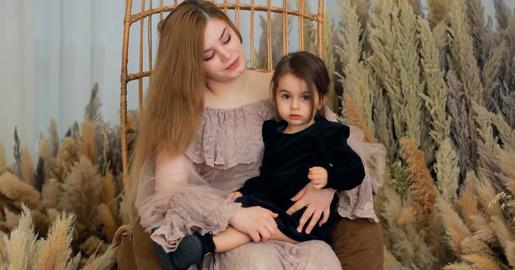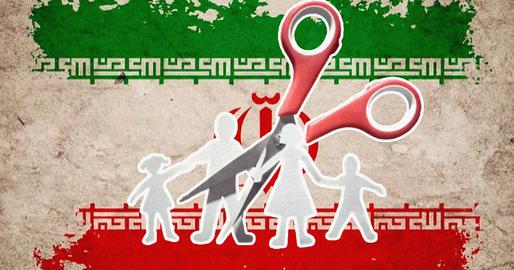For weeks, health officials warned people not to travel during the religious holidays of Muharram, warning that it would lead to a new wave of coronavirus — according to some reports, the third — and a spike in fatalities. However, many Iranians ignored the advice and traveled as they do every year.
“Recent travels undertaken with disregard for health guidelines and advice will spread the epidemic across the country in the coming weeks,” said Hamid Rasouli, a member of the National Coronavirus Taskforce. “We do not know which one of us or which of the people around us will fall victim.”
On the other hand, the other annual activities that went ahead were Muharram mourning ceremonies, which some government critics say officials did not try hard enough to control. Some on social media said that ceremony organizers and some officials have used reports about travel to cover up the role Muharram events could have played in giving the coronavirus epidemic a fresh boost. As in so many situations over the last several months, officials were willing to blame the public for increased health risks, infections and fatalities. “I believe both mourning gatherings and traveling are equally unnecessary. But every day news reports [on the state-run radio and television] criticize people for traveling, portraying them as dimwits, and then claim that the religious ceremonies were held with 100 percent compliance to health protocols,” one person named Kanima tweeted. “This is highly ridiculous and disgusting.”
The country is in a state of limbo, waiting to see what happens regarding coronavirus infections across the country.
Arbaeen Canceled
Even though Muharram, when Shias mourn the martyrdom of Imam Hossein in 680 AD, has passed, there are other religious traditions due to take place that could also pose risks to public health. Arbaeen, the 40th day of Imam Hossein’s death, falls on October 7 this year. On this day, large numbers of Shias travel to Iraq to mourn in Karbala, where Imam Hossein was killed. On September 1, Hossein Zolfaghari, deputy interior minister for security affairs, announced that this year’s Arbaeen ceremonies have been entirely canceled. “Iran’s ambassador in Baghdad has informed us that Iraqi officials have announced clearly that this year, because of the coronavirus epidemic, they will not accept any foreign pilgrims.”
Schools Due to Reopen
The next challenge will be school reopenings, scheduled for September 5. The Ministry of Education has expressed its preference for classes to go ahead in person, but parents are worried. Some believe that the ministry lacks the necessary facilities and infrastructure for such a plan to go ahead. Parents, students and teachers face many unanswered questions.
“These uncertainties are logical to a certain degree,” said Rezvan Hakimzadeh, deputy education minister for primary schools. “We have never started the school year under such conditions. We had completed two-thirds of the previous school year when schools were closed, but this year we are starting out under uncertain conditions. We have tried to explain these uncertainties.
“The areas in a white state of alert [where coronavirus does not pose any significant risk] are mostly areas with low populations,” she said. “In rural, tribal and remote areas most schools have less than 50 students, and in these areas classes will be held in person. We must also point out that in many such areas the technological infrastructure [for remote classes] might not exist.”
According to Hakimzadeh, in areas in a yellow, or moderate, state of alert, classes will be held both in person and remotely, but in “red” areas only remote education will be used.
Provinces Round-up
As of Tuesday, September 1, Chahar Mahal and Bakhtiari had the highest number of infections the province had reported since the coronavirus outbreak, according to Dr. Majid Shirani, president of the province’s university of medical sciences. “Nevertheless, the level of infections is lower than the national average and Chahar Mahal and Bakhtiari is still a low-infection province. The four cities of Shahrekord, Borujen, Lordegan and Saman are in a red state of alert and in these four cities health protocols must be observed more strictly than before.”
On September 1,158 patients with coronavirus symptoms were hospitalized across the province, of whom 128 tested positive. Of this number, 38 are in intensive care unit (ICU) wards and, in the 24 hours leading up to September 1, there were two fatalities, bringing the total coronavirus death toll in the province to 165.
The neighboring province of Kohgiluyeh and Boyer Ahmad was also worrying. In recent days, the number of coronavirus cases in the province increased 3.5 times. Dr. Parviz Yazdanpanah, president of the Yasuj University of Medical Sciences, said the number of infections had increased in the cities of Kohgiluyeh, Boyer Ahmad, Choram and Lendeh. He blamed the increased numbers on people ignoring health guidelines and funerals with thousands of attendees. “Usually 20 percent of coronavirus patients have to be hospitalized and five percent of them need ICU beds,” he said. “If this trend continues, we will run out of beds in hospitals and ICU wards and, as a result, fatalities will increase multiple times in the coming two or three weeks.”
The province of Mazandaran, which has seen many holiday travelers in recent days, remains in a red state of alert. On September 1, hospitals run by Mazandaran and Babol universities of medical sciences reported 747 inpatients with coronavirus symptoms.
On the other hand, as of September 1, the province of Golestan was in a yellow state of alert, having emerged from a red state, reported Dr. Abdolreza Fazel, president of Golestan University of Medical Sciences. The cities of Maraveh Tappeh and Gomishan were in a white state of alert, the cities of Ramian, Minoo Dasht, Kordkuy and Bandar Gaz were “red” and other cities in the province were in a yellow state of alert. Since the coronavirus outbreak, Golestan has had 7,690 confirmed cases and a death toll of 869. As of September 1, 288 Covid-19 patients were hospitalized in the province, he said.
Was it possible for the government to prevent the vast spread of coronavirus in Iran? “Yes, it was possible!,” insisted Mostafa Moeen, a reformist political activist, a professor of pediatrics and a human rights activist. In an interview with the newspaper Shargh, he said, “An immediate announcement by the Ministry of Health about the outbreak of coronavirus in Iran, transparency in disseminating information, continuing education of the people through radio, TV and social media, quarantining the first contaminated areas such as Qom or cities in northern Iran and preventing traffic to and from these areas could have prevented the virus from spreading across Iran. This is what happened in countries like Australia, China and New Zealand, which prevented massive human fatalities and the loss of their human and medical capital and their other national resources.”
In her daily briefing for September 1, the health ministry spokeswoman Dr. Sima Sadat Lari said that currently 14 provinces are in a red state of alert and 15 provinces are in an orange state.
- Red: Tehran, Mazandaran, Gilan, Qom, Isfahan, Razavi Khorasan, East Azerbaijan, Kerman, North Khorasan, Semnan, Yazd, Zanjan and Qazvin
- Orange: West Azerbaijan, Alborz, Fars, Lorestan, Hormozgan, Ardebil, Bushehr, Kermanshah, Kohgiluyeh and Boyer Ahmad, South Khorasan, Markazi, Ilam, Chaharmahal and Bakhtiari, Golestan and Khuzestan
Dr. Lari also announced the official coronavirus statistics for the last 24 hours:
- New confirmed coronavirus cases: 1,682
- New hospitalizations: 786
- Total cases since the outbreak: 376,894
- Total coronavirus tests conducted in Iran: 3,256,122
- Total recovered from coronavirus: 325,124
- New fatalities: 101
- Total death toll since the outbreak: 21,672
This is part of IranWire's coronavirus chronology. Read the full chronology




























comments